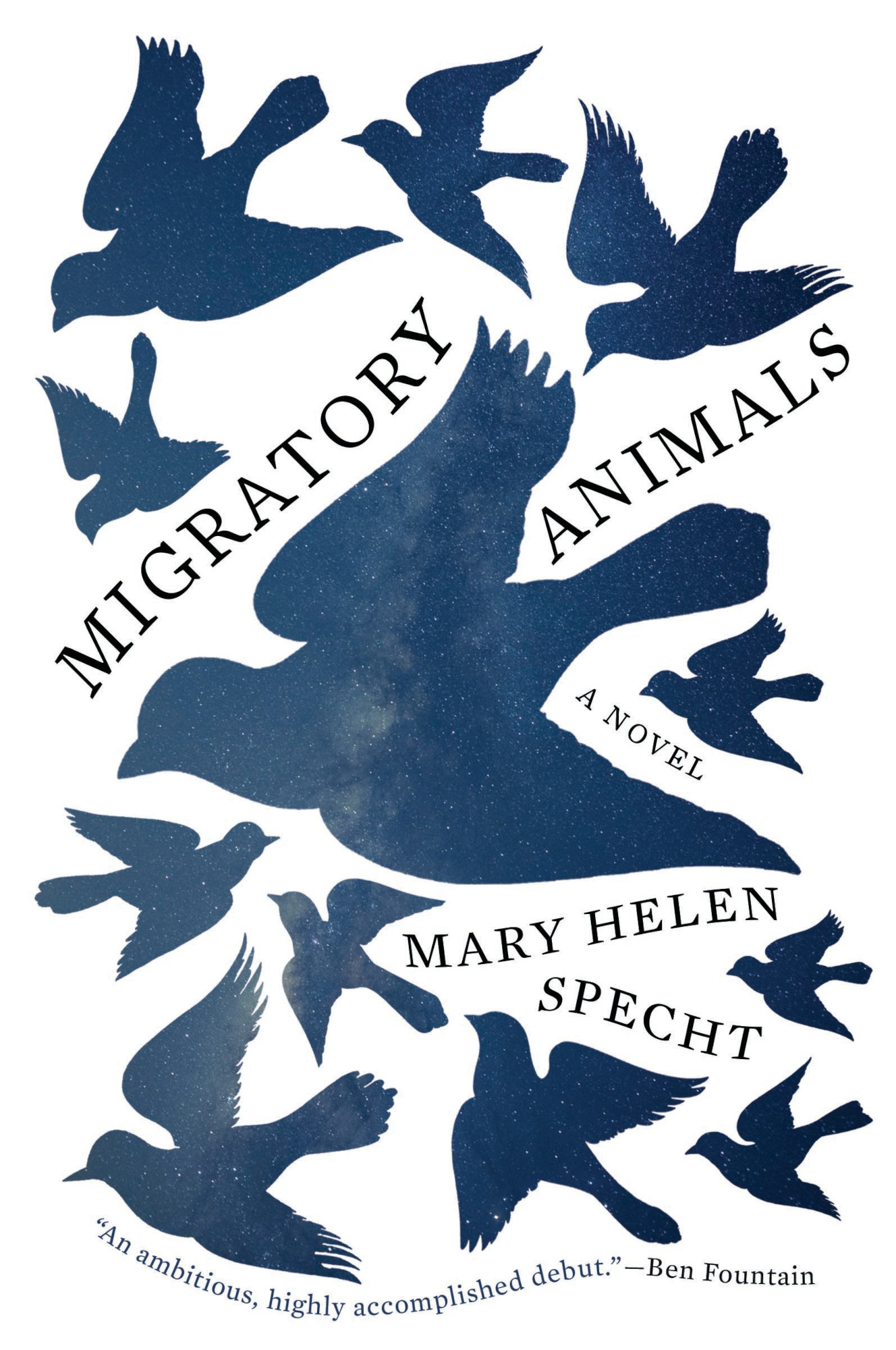<cite>by Forrest Preece</cite>
Migratory Animals by Mary Helen Specht
Austin-based author Mary Helen Specht’s debut novel, Migratory Animals, was named an Editors' Choice by the New York Times Book Review and also won the Texas Institute of Letters Best First Fiction Award and the Writers' League of Texas Best Fiction Award.
A well-crafted book, it follows the lives of several modern-day people as they weave through relationships, their feelings about each other and themselves, and the changes that time posits on everyone.
Flannery, the primary character, with a name aptly implying wandering, is torn between the feelings she has for Kunle, a man she met in Nigeria, and Santiago, a former boyfriend in Austin. He’s an architect who is repurposing a fire station in Clarksville to be his own dwelling, hence the old flame reference. Flannery has had to return to the States because it’s 2008, the recession has hit, funding has dried up for her artificial snow research project in Nigeria, and she can use lab equipment at a college in Austin for experiments.
I’m sure Mary Helen is tired of the Big Chill references in her reviews, but yeah, once I was into this story even ankle deep, that’s what I thought. The characters are college pals who have drifted into marriages and relationships, many of them have relocated elsewhere, then all have settled back into Austin’s embrace. Each of them are burdened by their uncertainties about their paths in life and the vagaries of fate. For instance, Molly, Flannery’s sister, has the early signs of Huntington’s Disease, hereditary in her family. Alyce has serious depression issues and separates from her husband in frustration. Then there’s Santiago, who has opened an architecture firm with Harry, Alyce’s husband, and a crucial project suddenly gets canceled, causing financial trouble and tension.
The stories intertwine and Mary Helen does a masterful job of keeping their arcs moving ahead. She writes with a florid style, often interjecting deft literary turns of phrase. Then there are the frequent references to migration – a variety of birds strut their scenes, and the iris bulbs from Molly and Flannery’s mother are shuttled around to various locations and always bloom. I’m not going to be a spoiler, but she wraps it up beautifully -- the last scene in the book is a 21st century riff on the ending of James Joyce’s most famous short story. (That’s for all you English majors out there.)
One plus for West Austin News readers is that most of the book’s action takes place in our town and she makes liberal use of place and restaurant names like Quack’s, Stubb’s, La Zona Rosa, and Jeffrey’s, so you’ll feel an extra connection with the story lines.
If you are looking for a book that provides intense looks into characters struggling with their journeys in life and what it means to be looking for home, I recommend this one.







